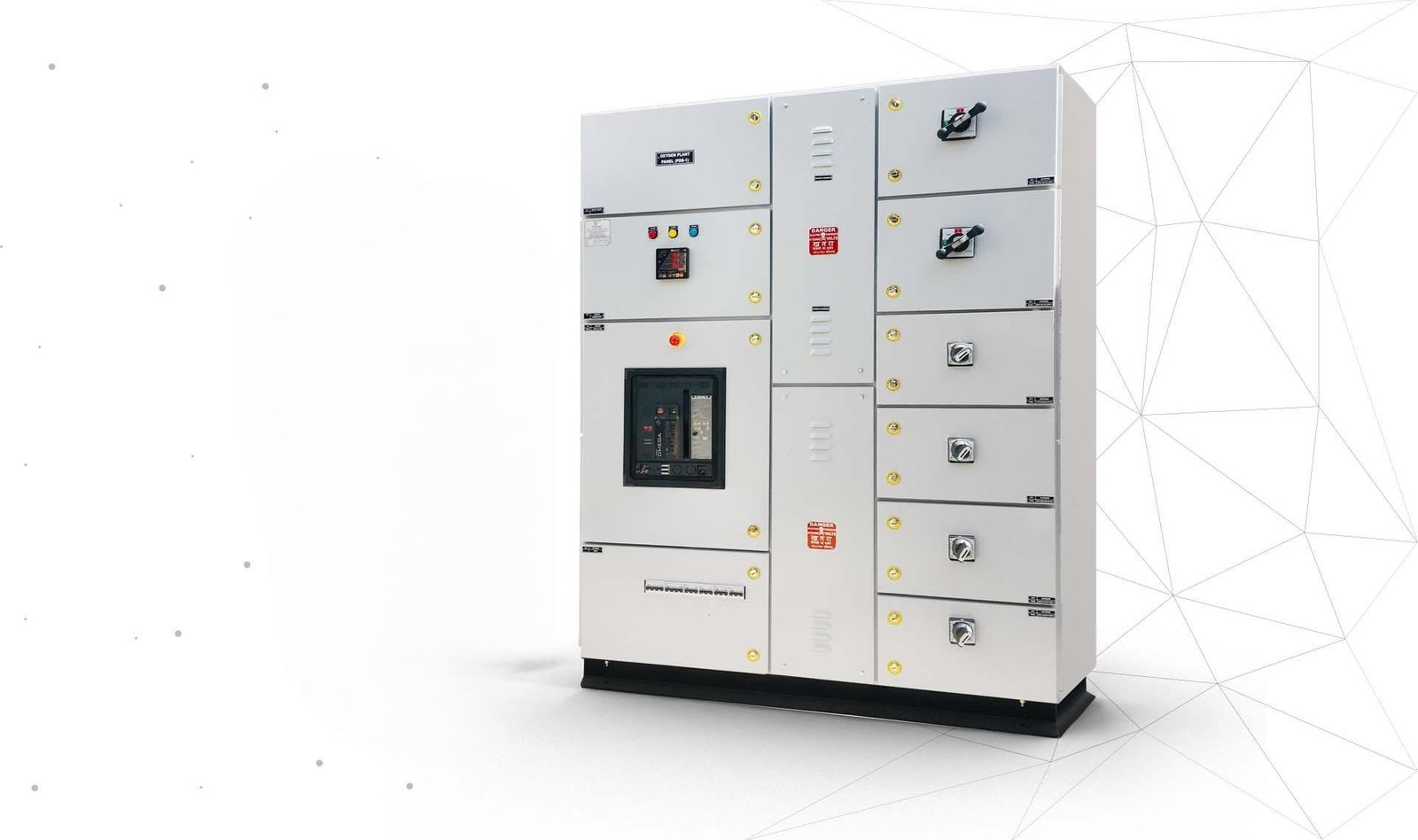SAAR INDUSTRIES

PDB Panel
Power Distribution Board (PDB) Panel
A PDB panel, also known as a Power Distribution Board panel, is a critical component in electrical distribution systems. It serves as a centralized point for distributing electrical power from a main source to various circuits or loads within a building or facility. PDB panels typically contain circuit breakers, fuses, busbars, and other components to regulate and protect the electrical system. They play a crucial role in ensuring safe and reliable distribution of power to different areas or equipment, while also providing a means for maintenance and troubleshooting.A Power Distribution Board panel is a critical component in electrical distribution systems. It serves as a centralized point for distributing electrical power from a main source to various circuits or loads within a building or facility.
Main Incoming Power Supply: This is the primary electrical supply entering the PDB panel from an external source, such as a transformer or utility grid.
Circuit Breakers: Circuit breakers are devices designed to protect electrical circuits from damage caused by overloads or short circuits. They automatically trip and interrupt the flow of electricity when an abnormal condition is detected.
Fuses: Fuses serve a similar purpose to circuit breakers, providing overcurrent protection by melting and breaking the circuit when the current exceeds a predetermined level.
Busbars: Busbars are conductive bars or strips that carry electrical power from the main supply to various circuits or loads within the PDB panel. They provide a convenient and efficient means of power distribution.
Distribution Blocks: Distribution blocks are used to split or distribute electrical power from the busbars to individual circuits or loads within the panel.
Monitoring Devices: Some PDB panels may include meters and monitoring devices to measure electrical parameters such as voltage, current, and power consumption. This data provides valuable insights into the performance of the electrical system.
Protection Devices: In addition to circuit breakers and fuses, PDB panels may incorporate other protection devices such as surge protectors, voltage regulators, and residual current devices (RCDs) to safeguard the electrical system and connected equipment from damage.
Enclosure: The enclosure houses all the components of the PDB panel, providing protection against environmental factors, dust, moisture, and physical damage. It is typically made of sturdy materials like sheet metal or fiberglass.
Power Distribution: PDB panels serve as centralized points for distributing electrical power from the main supply to various circuits or loads throughout a building or facility. They ensure that power is routed efficiently and reliably to where it is needed.
Load Protection: PDB panels incorporate protection devices such as circuit breakers, fuses, and surge protectors to safeguard electrical circuits and connected equipment from damage caused by overloads, short circuits, voltage spikes, and other electrical faults.
Circuit Management: PDB panels enable operators to manage and control individual circuits or loads by providing switches or breakers for selective activation or deactivation. This allows for flexibility in managing power usage and responding to operational requirements.
Monitoring and Metering: Many PDB panels feature meters and monitoring devices to measure electrical parameters such as voltage, current, power factor, and energy consumption. This data provides valuable insights into the performance of the electrical system and helps identify any abnormalities or inefficiencies.
Safety Compliance: PDB panels adhere to industry standards and regulations for electrical safety, ensuring compliance with safety requirements and minimizing the risk of accidents or hazards in buildings or facilities.
Maintenance and Troubleshooting: PDB panels provide accessibility to components for maintenance and troubleshooting purposes. This allows technicians to inspect, repair, or replace components as needed to ensure the continued reliability and safety of the electrical system.
Residential Buildings: PDB panels are commonly used in residential buildings to distribute electrical power from the main supply to various circuits throughout the home. They provide a centralized point for managing and controlling power distribution, ensuring that electricity is efficiently routed to lighting, appliances, outlets, and other electrical devices.
Commercial Buildings: In commercial buildings such as offices, retail stores, and restaurants, PDB panels play a crucial role in distributing electrical power to support various operations. They provide power to lighting, HVAC systems, office equipment, kitchen appliances, and other electrical loads, helping to maintain a comfortable and productive environment for occupants and customers.
Industrial Facilities: PDB panels are extensively used in industrial facilities such as factories, warehouses, and manufacturing plants to distribute power to machinery, equipment, and production processes. They ensure that electrical power is delivered safely and reliably to support manufacturing operations, machinery operation, and other industrial processes.
Data Centers: In data centers, PDB panels are essential for distributing electrical power to servers, networking equipment, cooling systems, and other critical infrastructure components. They ensure that power is delivered efficiently and reliably to support the operation of IT equipment and maintain uninterrupted uptime for data center operations.
Healthcare Facilities: PDB panels are vital in healthcare facilities such as hospitals, clinics, and medical centers to distribute power to medical equipment, diagnostic devices, lighting, HVAC systems, and other essential services. They play a critical role in supporting patient care and medical operations by ensuring continuous and reliable power supply.
Educational Institutions: PDB panels are used in schools, colleges, and universities to distribute power to classrooms, laboratories, administrative offices, and other facilities. They provide electrical power for lighting, audiovisual equipment, computers, and other educational resources, supporting teaching, learning, and administrative functions.
SAAR INDUSTRIES - one of the best manufacturers among all others in the Pune and make all types of junction boxes, earthing cables, control panels and cable trays.
Factory 2 :- Radhika Industrial park, Gat no 676, at post - Velu, Pune 412205
Factory 3 :- Radhika Industrial park, Gat no 676, at post - Velu, Pune 412205
Support@saargroupofindustries.com Sales@saargroupofindustries.com
